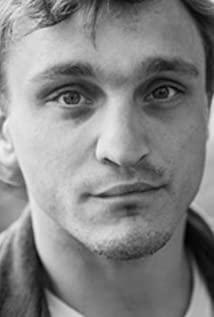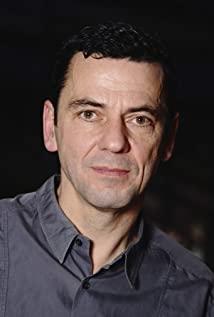Undine (2020) is the latest work by German director Christian Petzold. After the film was shown on the 4th day of the 70th Berlin International Film Festival, it aroused enthusiastic response, and finally ranked 3rd in the main competition unit with a high score of 3.1 in the field book, and won the Best Actress Award. "Wendini" uses elements such as love at first sight, life-and-death love, telepathy, etc. that are common in conventional love movies, and tells a moving, contemporary urban love story with a mythical structure. The pure expression of love in the film is somewhat rare in the current increasingly political and conceptual film festival video creation, which is also an important reason for its acclaim and heated debate. But it is difficult for us to simply talk about "Wendini" in the framework of pure love films. At least, when Petzold makes his heroine appear as a historical consultant and an urban development interpreter, the voice of history is destined to be an important presence in the film.
In the film, love is even just a foil, or a substitute for history. This complicates Undine's story of Berlin, because we can't tell whether she's talking about the city or her own love. Wentini's delicate voice is both an affectionate look back at the past and a hopeless effort to bring history back to the present. As the film opens, she is in the cafe's open-air booth, confronting her ex-boyfriend with what she desperately wants to accomplish. She was so hysterical at the time, as Deleuze mentioned in Francis Bacon: The Logic of Sensation, the word hysteria is a correspondence with potential time, which is independent of reality and implies a hysteresis. This lag is also reflected in urban architecture, as they are both bearers of present love and monuments of past history.
So, when Wentini first talked about the landmark historical buildings in East and West Germany in the exhibition hall of the Urban Development Bureau, history and reality immediately collided - witnessed by a large number of people, a close-up miniature model In an instant, she identified her relationship with her ex-boyfriend. As Windini's pupils slowly dilate in the shot, we get a glimpse of how memories come to life in a fatalistic form. Look at the man drinking coffee in the open-air booth waiting to end a relationship, for whom public space and private life are so closely intertwined.
The past has never been forgotten. In Wendini's narration, the voice of the official narration always came suddenly, like a punch into the seemingly ordinary life at the moment, leaving us a pit of pain, Or long-lasting scars. As a result, "Wendini" was once again included in Petzold's overall creative pedigree of German memory. With the help of this contemporary love myth, he wakes up in silence the histories that haunt the minds of Germans and become unforgettable souvenirs in the images. City, history and sound have always been three important coordinate systems for understanding Petzold's works. Putting "Wendini" in this new cognitive framework to understand, we will find that this work The film has a deeper cultural connotation and image charm than we can imagine.
1. Silent city and Berliners who keep telling
Berlin's urban space is layered by Petzold, which alludes to the historical reality of the city of Berlin. In the film, Wentini uses four miniature models to connect the past and present of East Germany and West Germany, Berlin - from the early 20th century to the 21st century for nearly a hundred years. As the socialist camp disintegrated, the city once divided by the high Berlin Wall was re-bonded. Today, the new tall buildings in the city are blurring the face of history. Without someone to explain it, no one seems to remember or care about what happened in the city in the past. Thus, the importance of memory and narration, which makes Berliners less memorable, is re-emphasized. The reason why Petzold made the narration a professional move of Wendine was to reinforce this.
We noticed that it was through this set of inward and outward actions of memory and narration that she was able to withdraw from her past traumatic experience. For example, when she learned that she was going to introduce the Humboldt Forum, which she was not familiar with, one of the actions Windini was forced to complete was to repeat the introduction text on the notebooks. Because only in this way, she can firmly engrave those historical information in her mind and completely internalize them into a conditioned reflex language output. As a result, she appeared in the pavilion as a spokesperson for the city, as a narrator of the official discourse, speaking to the masses from all over the world, including moviegoers.
It was in her story that we gradually learned about the complex historical changes in Berlin - the original core area of Berlin was shaped like a dog's head, with a total area of about 90 square kilometers. One-tenth of the total area of Berlin. The initial determination of the urban boundaries of modern Berlin can be traced back to the Greater Berlin Act of 1920, which merged villages and suburbs near Berlin into urban areas, doubling the city's population and starting the modernization process of the city.
If Wentini’s story provides an opportunity to look back on the past, then the legacy of architectural entities and urban spaces is obviously the direct material evidence of the political changes and social evolution that took place here. It is through the direct display of urban space that Petzold achieves the rewriting of history. Staring at the second miniature model in the exhibition hall, we can see that the buildings in East Berlin have a very different style and shape from the capitalist West Berlin, the appearance of those colorful plastics makes it seem close and lovely, expressing the society of this country Socialist ideals have not been forgotten.
In fact, after the reunification of Germany in 1991, the focus of urban development in Berlin was on the former inner city of East Germany. When new social forces entered the once opposing ideological space, the past was not completely covered up by the present, just like those newly born buildings were marked with brown models to distinguish them from the once white buildings, which made the time loose The urban planning of , which has become crowded and bloated, also shows the true urban state of Berlin at the moment. The new speed of development squeezes people's living space in the past, and new social problems are constantly emerging. The modernization of the city has not realized the promise of a better life, so people are more willing to pay attention to the past and become nostalgic and silent.
Like Wendine, she chooses to keep her mouth shut most of the time outside of her work environment. Sitting in the outdoor cafe, she couldn't even utter a complete sentence. She could only express her intentions to her boyfriend by nodding or shaking her head. In this scene filled with long stares and pauses, Wentini keeps repeating the phrase "I need to see you", and her correction of her ex-boyfriend's words is almost vexatious, which also shows her language in the moment The system cannot find a suitable language to communicate with people.
George Steiner pointed out in the article "Silence and Poets" that people choose to be silent because words cannot express themselves. Language reaches its own boundaries, because there is something transcendent that cannot be expressed, that is the realm of the divine, accessible only by light, music, or silence.
Of course, silence can also mark a complete break with language. When language is polluted and loses its humanized power, people can only choose "suicidal rhetoric - silence". Wentini's situation is approaching the latter. Dissatisfied with the reality of breaking up, she closed herself up and looked for sustenance in the past. This is similar to the plot in "Good Bye Lenin!" (2003), where those who want to escape reality can only choose to continue dreaming, or remain silent, all she can express is the past.
In fact, the history of East Germany is a problem that Petzold and many German films often encounter in their creation. There is even a word in German to describe it, which is the so-called East German complex (Ostalgie ). The complex has been identified as a nostalgic feeling that stems from dissatisfaction with the present, as well as nostalgia for the good old days of trying to regain the high welfare system and communal life of good neighborhoods under East Germany's socialist system.
Because, although the GDR under centralized rule means conservatism and confinement, it also means security and a sense of security, which embodies the ideals of the citizens. This fascination with the past years can also be expressed as nostalgia or nostalgia, which often appear in artistic creation and are often embodied as a visible material entity, such as Tarkovsky in Nostalgia (Nostalgia, 1983). ) in the nostalgia for the Russian homeland.
And for Wendine, this entity is that past love object. Of course, nostalgia is only a vaguely revealed psychology. One cannot live in the past forever. The modernization of cities is always progressive, and new buildings are constantly appearing, as is love. So, at the moment when the fish tank in the cafe bursts, what Wentini encounters is not an accident, but a brief and eternal experience of modernity, and she discovers her own future - a future born out of love.
2. The Pain of Modernization and the Reality of Deep Water
In the film, Petzold deliberately presents Berlin as a city nurtured by water (the word Berlin itself means swamp or dry land in a swamp). In fact, the flow of water has always been a very important element in Petzold's films, such as the two falling scenes in "Yella" (2007), we can't tell whether Yella died once or twice in the film , the water blurs the line between life and death. The water flow in "Wendini" inherits this metaphorical direction, reduces the proportion of death, and magnifies its implied rebirth. The water flow brings about the inevitable pain experience in the process of modernization, and after the pain comes new development. This is exactly what Windini gets in the film from her intimate contact with the water.
The shards of glass from the fish tank pierced her with blood, but it also led her to meet Christopher. The pain in her body indicates her growth in love. She finally bravely bid farewell to the past and stepped into the next love. The name Undine means water spirit in German mythology, which means that she can only find her true self in the water and gain recognition in the environment.
So, we can think of her love affair with Christopher as a process of self-discovery, because Christopher's diver career is destined to keep Wentini back in the water. The film seduces the two with a smile in the water, and then turns to the deep waters of the West Berlin Reservoir where Christopher works. We can see that he is engaged in underwater restoration work, and the restoration he provides is also for Wentini. If the previous Wentini had to live in the past because she couldn't forget her love, then returning to the water with Christopher obviously brought her back to the present.
But returning to the present does not necessarily mean forgetting the past. History is simply inscribed here in another way, that is, not bluntly repeated in official words, but into the deep waters of personal memory. For the past, we don't have to force others to believe, we just need to let ourselves know what happened and how to live in the future. This is also the value of private memory that distinguishes it from grand history.
It is in private memory that we can touch the truth of history. As the French historian Pierre Noir said, "Memory and history are far from being synonymous with history, they are actually the opposite. Memory is life, produced by a living society, and society is built in the name of memory." This view of memory is confirmed at the end of the film. After Wentini left, Christopher found Wentini underwater again. This encounter made him sleepless.
Finally, he got up and left from his current lover, and sank into the deep water alone, hoping to reconnect with Wendini. We see two people holding hands tightly together, and the sense of intimacy conveyed from it makes people mistakenly think that they are using the water as their tombstones, and they want to sleep here and stay together forever. However, Christopher made a move that shattered our expectations, and he finally decided to return to the surface world from underwater to be with those who were still alive, while Vindini could only occupy a significant place in the depths of his memory. , like the sculpture he held in his hand—she became a souvenir.
At this time, we can already glimpse Petzold's attitude towards history, that is, let the past go and let the present continue to happen. This is the philosophy of life that every living person must learn. Those who live forever in the past are There is no way out.
In Wendine's account, we learn that the place where the Murrendam Bridge spans the Spree is the birthplace of modern Berlin, but as a mother's womb, it is no longer the core area of the city, which also indicates that The twists and turns and cruelty of the modernization development process.
Faced with the historical process, individuals can inscribe it as a popular myth by repeatedly telling it, but they can also remain silent after inscription, making it a more vital personal memory. This is Petzold's profound allegory for the development of Berlin today, and it is also an important point that each of us should practice when facing personal and historical issues.
View more about Undine reviews











